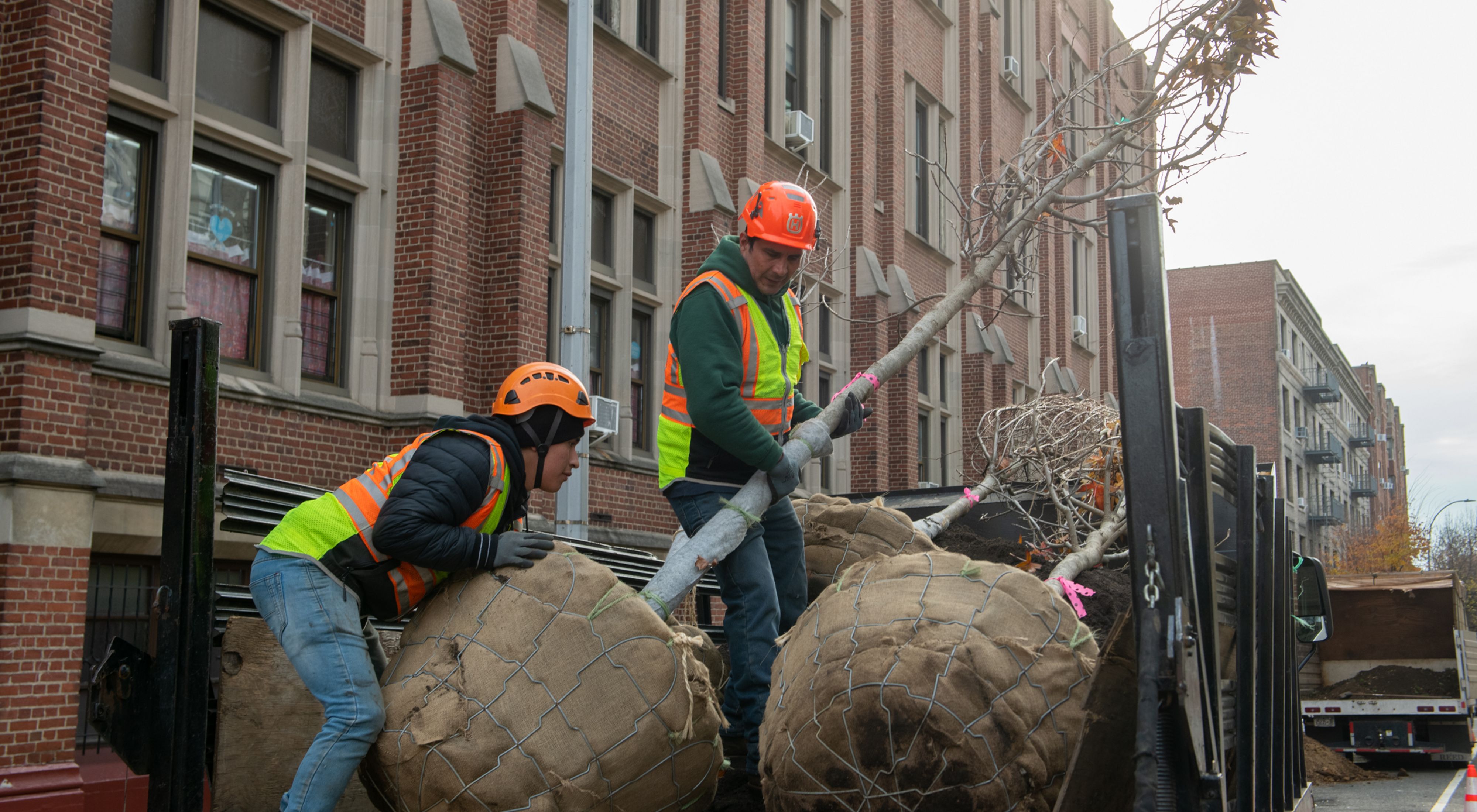Newly-Published Study Finds Potential to Nearly Double Tree Canopy in New York City
New Trees and Proper Care for Current Trees Could Increase Tree Canopy in New York City from 22% to over 40%
Media Contacts
-
May Yeung
Media Relations Manager
Phone: (347) 387-4250
Email: may.yeung@tnc.org
The analysis informed Forest for All NYC’s call to establish a citywide goal of equitably reaching at least 30% canopy by 2035
A newly-published paper by researchers from The Nature Conservancy, Understanding Opportunities for Urban Forest Expansion to Inform Goals: Working Toward a Virtuous Cycle in New York City is now available in the journal Frontiers in Sustainable Cities. The paper estimates practical canopy—the opportunity for additional tree canopy in the present day landscape—in New York City. Initiated to help inform the setting of a tree canopy goal, the study found the potential to increase tree canopy cover to 42% without changing existing landscape constraints, such as buildings, roads and other land uses. As of 2017, canopy cover in New York City was 22%.
The findings may serve as a tool to help government, community planners and advocates understand potential for increasing tree canopy based on current land constraints. The study focused on potential to plant trees and support their growth, assuming protection and maintenance of trees already standing. The study also found that some of the most heat-vulnerable communities in New York City had some of the lowest opportunities for new canopy with the existing landscape. That indicates a probable need for broader changes in the planning of those communities, such as in streetscape design or zoning, in order to equitably increase tree canopy and its associated benefits across New York City.
“The results of our work are intended to support planning around the urban forest and ultimately inform conversations around what might be possible," said Dr. Mike Treglia, Lead Scientist for the New York Cities Team at The Nature Conservancy. “Our findings can offer a sense of what strategies might be most critical for expanding the urban forest in a given area—from maintaining and caring for trees already present, to planting new ones. It also acknowledges the limits of what might currently be possible in some areas, which may mean finding ways to redesign spaces in order to create more opportunities for planting.”
Natalia Piland, Interdisciplinary Scientist for the New York Cities Team at The Nature Conservancy added, “Local voices are an essential component to expanding the urban forest. They are uniquely able to address longstanding and persistent inequities in how the benefits of the NYC urban forest are distributed. We hope to see New Yorkers use this tool to plan and talk with their neighbors and representatives about where new trees can go.”
By providing shade and through other processes, urban forests keep cities cooler during the summer. Extreme heat is the deadliest weather-related hazard in the United States, linked to hundreds of deaths annually in New York City alone. In New York City from 2011–2020, non-Hispanic Black residents died at significantly higher rates than all others due to extreme heat. The cooling benefits of tree canopy are particularly critical given projections of warmer temperatures and more heat waves into the future. Other important benefits of the urban forest can include reducing air pollution, helping manage stormwater, serving as habitat for biodiversity and contributing to community cohesion.
“Despite the many benefits that trees provide, they are not evenly distributed in New York City or in many other metropolitan areas nationwide,” said Emily Nobel Maxwell, Director of the New York Cities Team at The Nature Conservancy. “Given considerations such as a need to improve equity of the urban forest, we are empowered by the findings of this study and feel energized in calling for a citywide goal of increasing canopy cover equitably to at least 30% by 2035. This goal, detailed in the NYC Urban Forest Agenda and advocated by Forest for All NYC, is visionary and actionable. The Nature Conservancy is pleased to support it.”
Forest for All NYC, a growing coalition of over 70 members that The Nature Conservancy is a founder and lead convener of, released the NYC Urban Forest Agenda in 2021. The Agenda is a road map to equitably grow, expand and maintain the New York City urban forest. One of the first action steps was for a unified goal of attaining 30% tree canopy equitably distributed throughout New York City by 2035. For more information, visit forestforall.nyc.
The Nature Conservancy is a global conservation organization dedicated to conserving the lands and waters on which all life depends. Guided by science, we create innovative, on-the-ground solutions to our world’s toughest challenges so that nature and people can thrive together. We are tackling climate change, conserving lands, waters and oceans at an unprecedented scale, providing food and water sustainably and helping make cities more sustainable. The Nature Conservancy is working to make a lasting difference around the world in 81 countries and territories (40 by direct conservation impact and 41 through partners) through a collaborative approach that engages local communities, governments, the private sector, and other partners. To learn more, visit nature.org or follow @nature_press on X.
